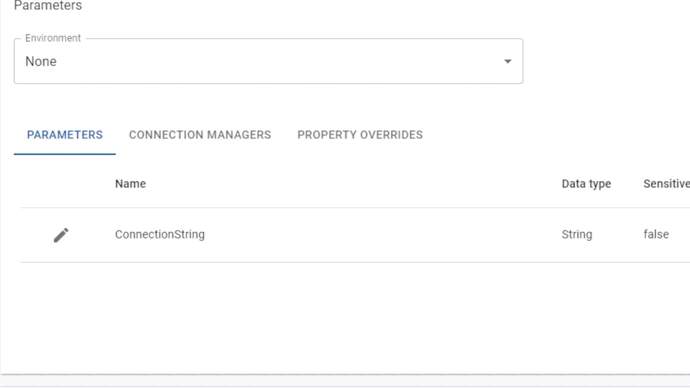SSH Configurations
Available for Flex (SSIS) and Gems (Pre-built)
On the Connectivity page, there is a sub-section called SSH Configurations. Use this page to set up SSH configurations.
From the SSH Configurations page, you can perform the following actions:
- Create SSH configuration
- Update SSH configuration
- Delete SSH configuration
SSH configuration name is unique for your organization
SSH tunnel name is unique for each SSH configuration within your organization
Usage?
To be able to use SSH configuration you have to use our expression syntax as a parameter value or as an environment variable.
e.g. ${SSH::stage:tunnel1.Host} or ${SSH::stage:tunnel1.Port}
You can find below what each part of the expressions above mean:
- The
SSH::prefix is mandatory for every SSH expression stageis the name of your SSH configurationtunnel1is the name of the tunnel which you want to useHostis the server addressPortis the port number
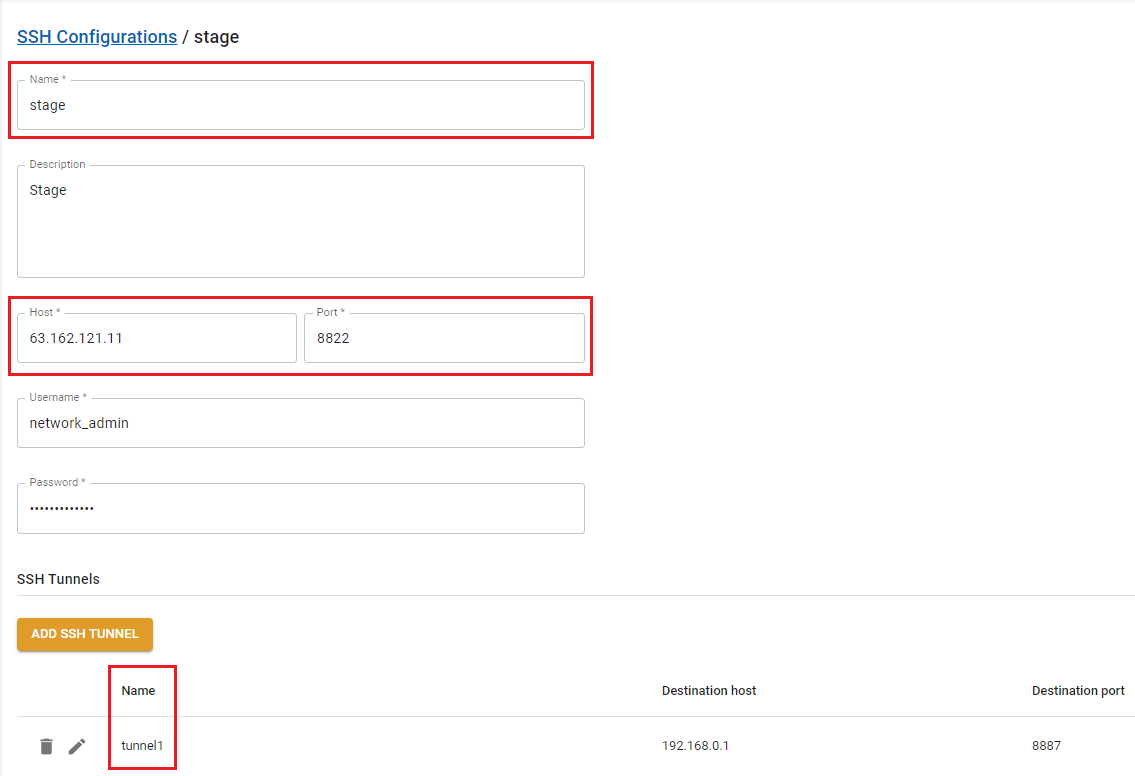
Expression as a parameter value
Let's assume that you have a package with ADO.NET connection and you want to set up an inbound webhook or a scheduled job connection string parameter to use SSH connection during package execution. Your connection string parameter value could be:
Server=${SSH::stage:tunnel-1.Host},${SSH::stage:tunnel-1.Port};Database=Autobox;User Id=username;Password=password321;
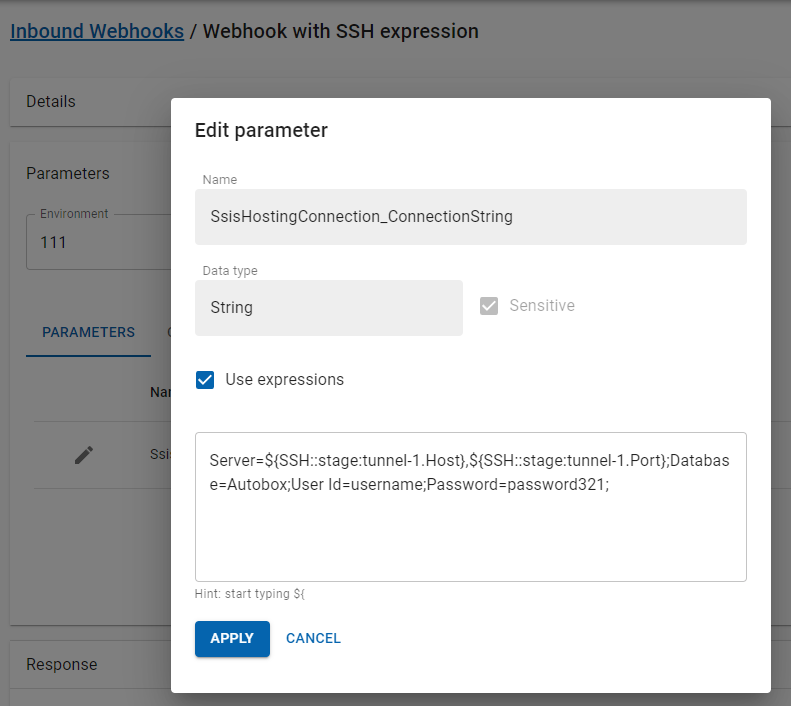
You can use our expression autocomplete editor by checking the Use expressions checkbox and then you can type ${ in the input field.
Next you will see a list with suggestions which will navigate you trough the expression configuration.
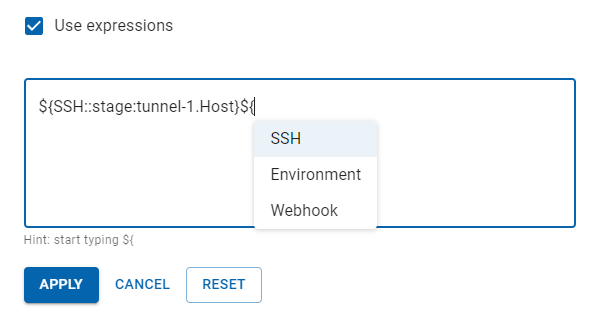
As an environment variable
Or you can go even further and make your SSH configuration reusable by creating it as an environment variable as shown below.
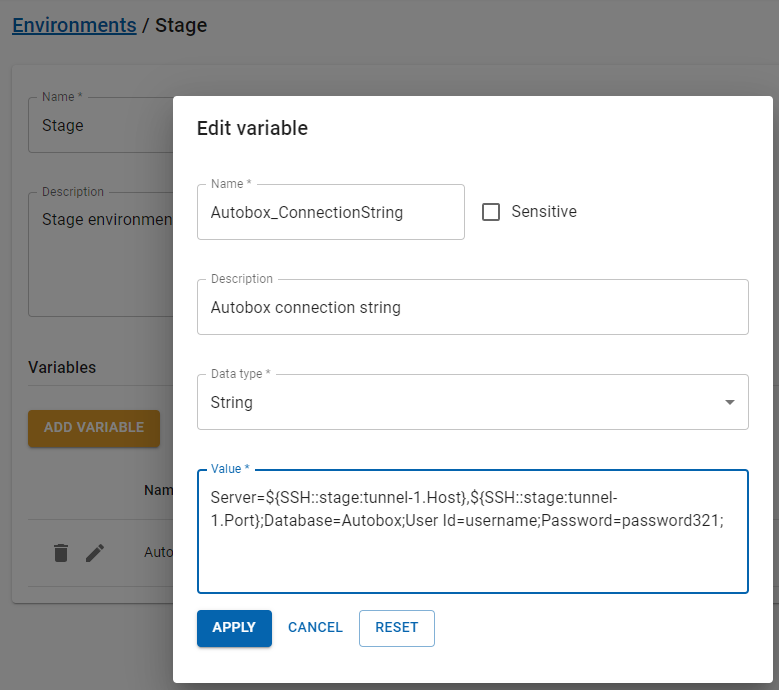
And then use it as an environment variable for your connection string parameter in the execution trigger as shown below.
